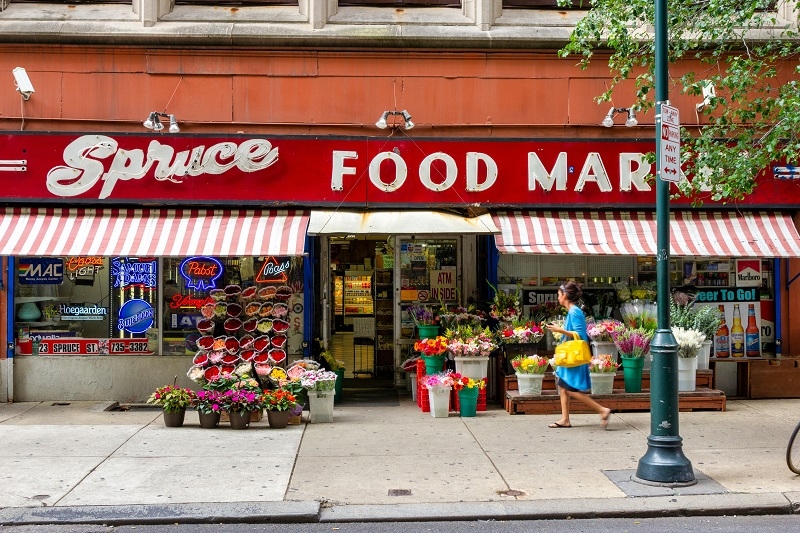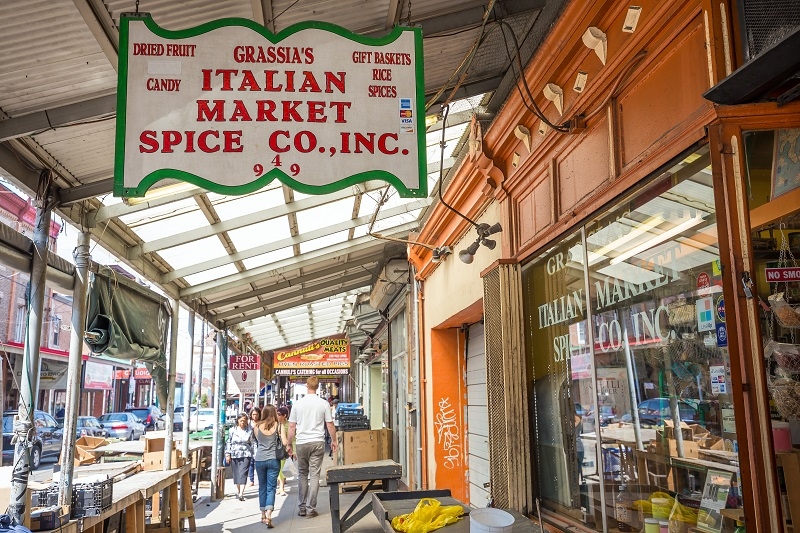
Philadelphia has a diverse and rich culinary history rooted in its neighborhoods. At the heart of this gastronomic tapestry are the food markets that dot the city, serving as hubs for fresh produce, local goods, street food, and cultural experiences. For locals and tourists alike, visiting these Philadelphia food markets is one of the best ways to experience the city's true essence.
Public markets have been part of Philadelphia since the city was founded in the late 17th century. Vendors first used individual carts. They later turned into organized market sheds as the city grew bigger, and the need for them to establish organized marketplaces increased. These markets offered fresh produce and local products and served as spaces for community gatherings where culture married commerce.
No tour of Philadelphia food markets would be complete without stopping at the iconic Reading Terminal Market. Located in a National Historic Landmark building, it’s one of the oldest and largest public markets in the nation. With more than 80 merchants, the market has an incredible array of food.
From hefty hoagies like the Stuffin’ Cranberry at The Original Turkey and Roast Pork & Beef at DiNic’s to international fare like Salmon Curry line the streets. Travelers will find the Little Thai Market and pupusas and churros from El Merkury, brunch fare at Dutch Eating Place or Ma Lessie’s Chicken & Waffles, a ton of baked goods from Beiler’s, Termini Brothers and Sweet T’s, and of course, cheesesteaks.
Aside from its variety of food offerings, Reading Terminal Market is a microcosm of Philadelphia’s cultural variety. Its mission is, in part, “to preserve the historic look and feel of its hall,” offer a wide variety of produce and prepared foods, and celebrate the city’s diverse citizenry.
Philadelphia’s food markets are best known for their focus on fresh produce and local products. These spaces draw farmers and artisans from nearby areas to sell seasonal fruits, vegetables, dairy, and artisanal products. The Rittenhouse Farmers Market, for example, is open year-round, featuring meats, cheeses, and vegetables from local farmers, as well as local honey and beer.
These markets supply high-quality ingredients and promote a direct line of communication between consumers and producers, putting the community on a path towards further supporting local businesses and sustainable practices.
The street eats at Philadelphia’s food markets take you around the world. The food is plentiful and diverse, from traditional Pennsylvania Dutch offerings to international fare. At Reading Terminal Market, for example, visitors can dine on DiNic’s famous roast pork sandwich, sample freshly made Amish pretzels, or peruse Thai, Mexican, and Middle Eastern flavors. These delicious street eats are delightful to the taste buds and paint the city's history and roots, one ingredient at a time.
More than just a place to chow down, Philadelphia food markets are cultural destinations. Cooking shows, performances, and festivals are common staples in helping visitors learn more about the city's culture and modern art scene. Events in Reading Terminal Market showcase local artisans, culinary talent, and cultural celebrations, enriching the community's social fabric.

Other than that, even the Italian Market in South Philadelphia is worth mentioning. As one of America's oldest and largest open-air markets, it’s a mix of classic Italian vendors and a growing number of Mexican, Vietnamese, and other international purveyors. Here, visitors will discover a selection of fresh produce, meats, cheeses, and specialty foods that reflect the neighborhood’s changing cultural landscape.
If you are in the mood for a more modern version of a food market, freelancer Zachary Shattuck wrote about (and for) The Bourse Food Hall, featuring a collection of artisanal food and drink vendors near Independence Mall. This contemporary food hall channels the spirit of Philadelphia’s storied past, serving everything from gourmet sandwiches to craft cocktails.
Supporting Philadelphia food markets has a multiplier effect that supports the wider community. When consumers purchase fresh fruits and vegetables and local products, they directly invest in regional farmers, artisans, and small business owners. This economic assistance sustains different elements of local demographics ranging from agriculture to culinary practices to city-based entrepreneurial frameworks.
Here are some tips to get the most out of your visit to the food markets of Philadelphia:
Timing: Explore markets on weekdays or early mornings on weekends for fewer crowds.
Arrive Hungry: With all the street eats and samples out there, you’ll want to come with an appetite to savor a bit of everything.
Cash is King: While vendors accept cards, some work only with cash. Cash on hand facilitates smooth transactions.
Talk to Vendors: Spend some time talking to vendors. You get their stories and recommendations, which can deepen your market experience.
Look for More Than Food: Many markets stock more than just edibles. Look for craft goods, flowers, and unique souvenirs.
There’s a theatricality of sorts to a day at Philadelphia food markets. As dawn breaks, the vendors set to work, unpacking crates of fresh produce and laying out piles of color: fruits and veggies, artisan breads, and handmade cheeses. The smell of coffee brewing from local roasters mixes with the sizzling of breakfast street eats, establishing the tone for the day.
At lunchtime, the foot traffic surges: office-goers lining up for trail-mix sandwiches, foodies snapping photos of decadent cookies and cakes, and tourists wandering the aisles. Families stop in the evenings to pick up groceries for dinner or, for dinner, from a rotating roster of pop-up stalls. It is this dynamic daily rhythm that imbues these local goods havens with their electric energy and lasting appeal.
While visitors may arrive to see historical sites, they tend to leave discussing the Philadelphia food markets. Combining the city’s authentic eats, warm hospitality, and busy settings gives you more than food — it’s a total experience. For residents, markets like Reading Terminal have become part of their daily lives, mixing nostalgia with contentment.
Many families have beloved stalls they’ve patronized for generations. Whether for the heritage ingredients, the street eats from cultures around the globe or just the joy of shooting the breeze with familiar vendors. These markets serve as emotional landmarks. They embody the real culture of the city, no frills, varied and flavorful.
The farm-to-table movement isn’t a trend in Philly; it’s a tradition that goes to the heart of its food markets. Years before it became a chic city activity, farmers from Lancaster County and other surrounding areas would bring their newly harvested goods directly into the city in open-air markets and glass-covered halls.
That spirit lives on today at Clark Park Farmers Market and Fitler Square. Consumers can meet the farmers who grow their food, inquire about pesticide use, learn cooking tips, and shop locally. These well-researched interactions reinforce a relationship with food and a level of community appreciation that supports local efforts to further sustainable agriculture.
Fans of plant-based fare will find themselves at home in Philadelphia’s diverse food markets. The variety is impressive, from vegan cheesesteaks to lentil empanadas to dairy-free baked goods. Markets such as Reading Terminal include sections devoted to vegetarian-friendly street eats featuring globally inspired, 100 percent plant-based dishes.
Fresh produce is so readily available that even home cooks can prepare healthy vegetarian dishes using seasonal ingredients. These markets aim to encourage a more inclusive food scene that caters to all dietary types and showcases our diverse culture of culinary innovation.
Mornings are generally quieter, with a more laidback vibe and easier access to popular stalls. Saturday mornings, however, are great for absorbing the vibrant atmosphere and trying some of the top street eats—it's a chance to mix with fellow food lovers.
Of the seasons, autumn is a favorite. The fall harvest means an abundance of fresh produce—crisp apples, pumpkins, and root vegetables. Spring brings early greens and a festive spirit and is also a good time to peruse local goods and experience mild weather. It’s the sweet spot for photography lovers and market purists: showing up right at opening time.
If Reading Terminal is the must-see icon, Philadelphia has a constellation of quieter—but no less delicious—neighborhood markets. Take, for example, the Italian Market, America’s oldest outdoor market. It is a cornucopia of handmade pasta and spices and the real-deal street eats of Italian and Mexican cultures.
For local artisanal goods such as honey, sourdough bread, and small-batch hot sauces, visit Headhouse Farmers Market. For something with a more intimate vibe, the Bryn Mawr Farmers Market or Rittenhouse Farmers Market have hand-picked natural produce, meats, and dairy, often served in an intimate atmosphere with the vendors. Such offbeat stops give a fuller sense of the city’s culture and flavors.
Adventure is never far away when exploring Philadelphia food markets. From the historic aisles of Reading Terminal Market to the bustling streets of the Italian Market, such spaces are home to an alluring mix of fresh produce, local goods, street eats, and culture.
This content was created by AI